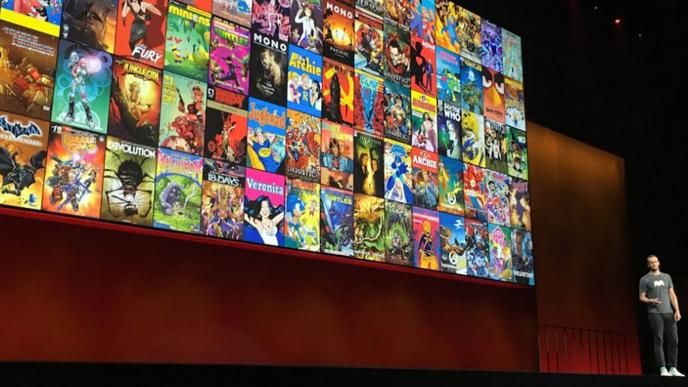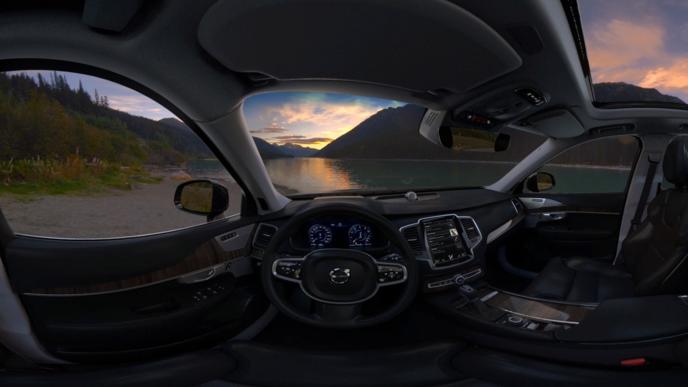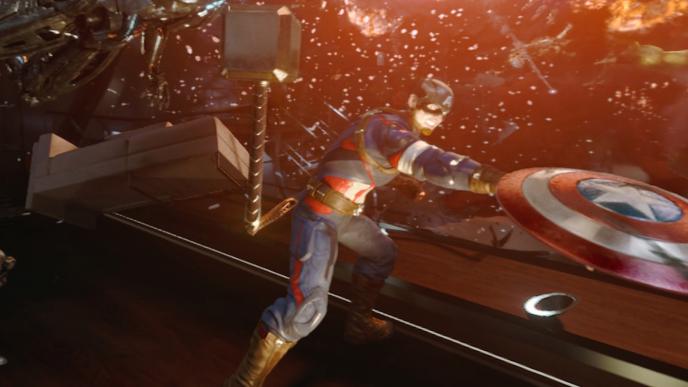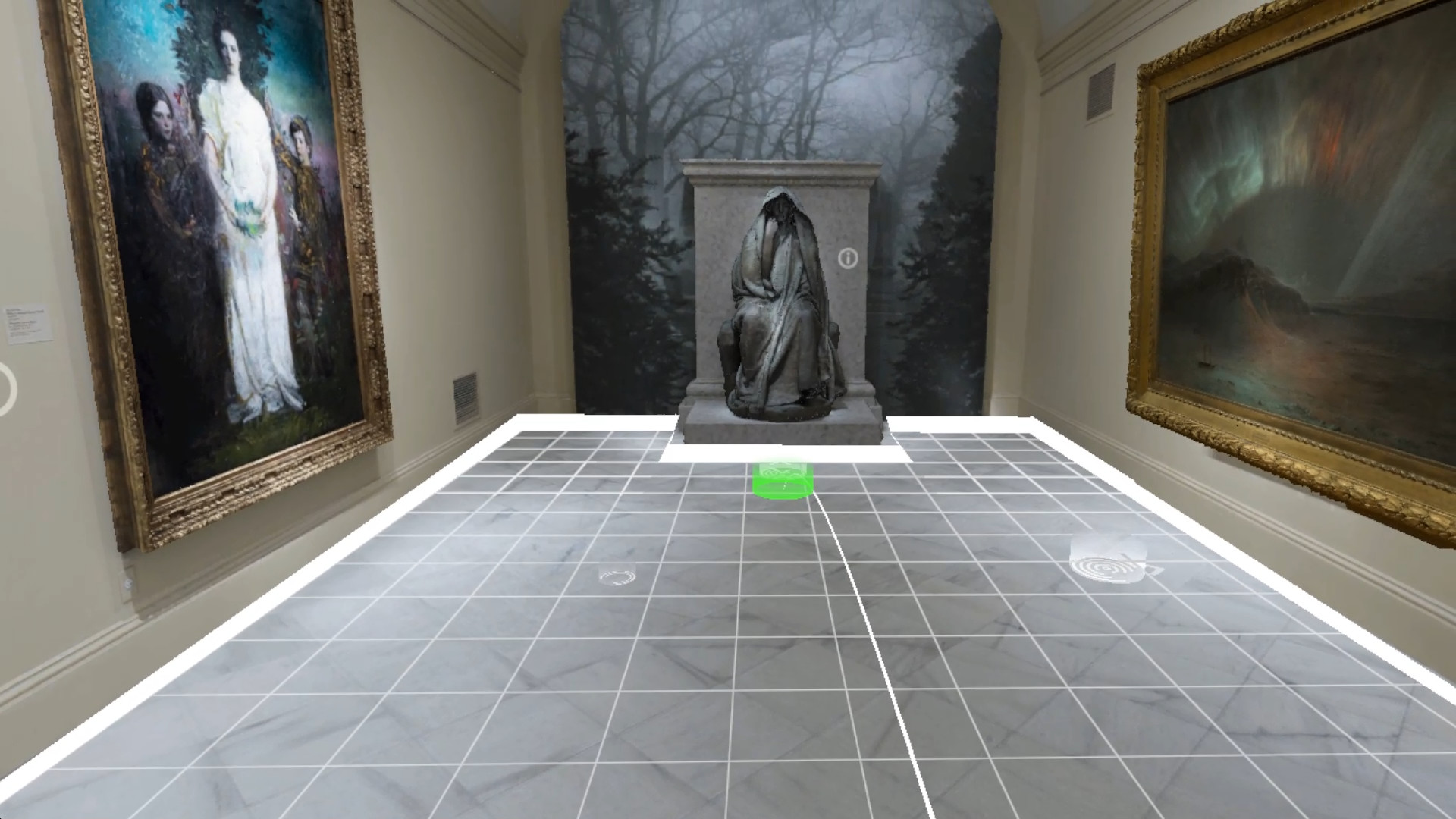
SAAM VR
Framestore has partnered with Intel and the Smithsonian American Art Museum (SAAM) to bring Beyond the Walls, a virtual reality experience that puts users directly in the museum’s galleries, into the hands of consumers. The experience originally debuted at 2017’s Consumer Electronics Show (CES), and was then exclusively shown at museum demonstrations and trade shows until now. In early August 2019 it launched for both the Oculus Rift and HTC Vive headsets, and is now available for free download through the SAAM site.
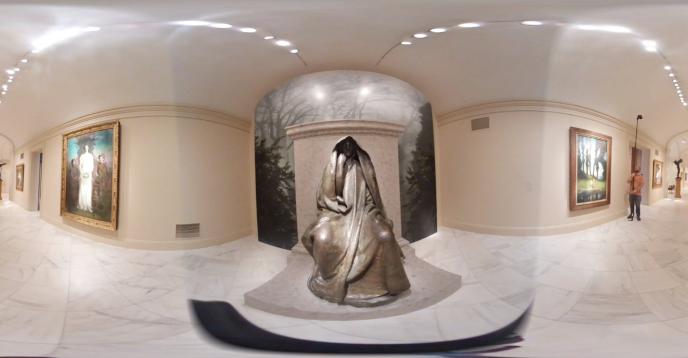
Beyond the Walls blends photoreal imagery of artworks in SAAM’s collection with augmented elements to let users interact with and learn about American art. Users are able to move freely around a portion of the museum’s east wing from inside their headsets, and view a dozen paintings, four works of sculpture, and one video art installation in high fidelity. Users can inspect every authentic detail while hearing information about the history of each piece.
Producing a consumer-ready version of the experience from an industry demo required various improvements and optimizations to ensure wide accessibility and engaged audiences. Framestore took this opportunity to improve the visual quality for consumers as well by collaborating closely with Intel and Hyperacuity to re-work and incorporate additional Intel-powered LIDAR scans to enhance every visible detail. Now, curious minds exploring the virtual museum can see the original artworks more clearly than ever. Framestore also designed and added a new tutorial experience that makes exploring the museum easy for first time VR users as well as veterans.
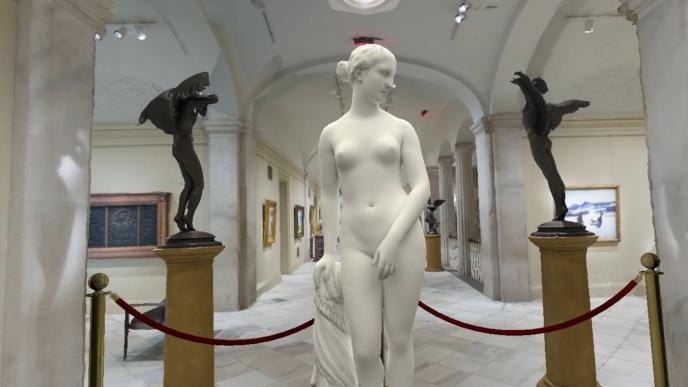
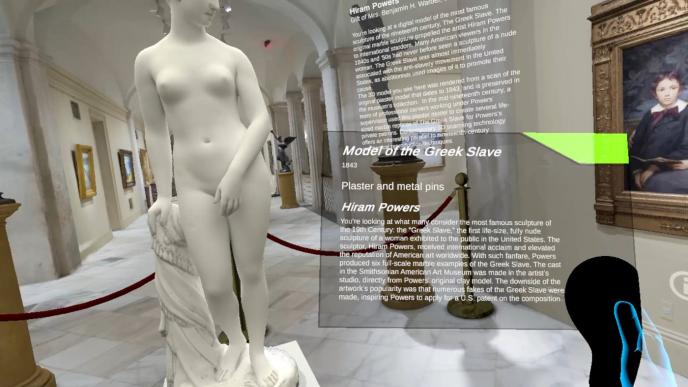
Framestore helped SAAM incorporate three unique elements into their virtual museum to take users beyond the museum walls, providing an interactive experience that gives fresh context to the original works of art. The collaboration allowed Framestore the opportunity to explore the potential of the platform and not only to build a virtual museum, but to create unique experiences for visitors that would otherwise be impossible in real life.
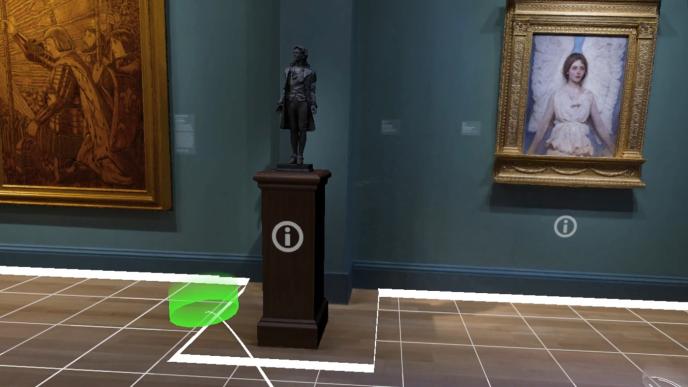
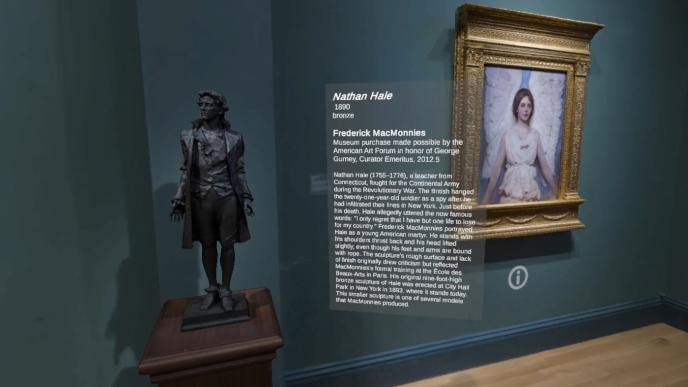
Upon approaching SAAM’s bronze cast of Augustus Saint-Gaudens’ Adams Memorial and selecting it in headset, users are transported out of the museum and into a 3D volumetric recreation of Rock Creek Cemetery, where another cast of the sculpture resides, complete with ambient sounds of light, wind and birds. The exhibit also features Aurora Borealis, an iconic 1865 painting by Frederic Edwin Church, that acts as a magical portal to Iceland’s countryside, where users suddenly find themselves immersed in a 360-degree, 6K video of an actual aurora borealis. The third interactive piece is a multi-channel video installation of Los Angeles-based artist Alex Prager’s 2013 work, Face in the Crowd. As the users travel through a hallway to a small black-box theatre, they are greeted by a volumetric hologram of the artist herself, discussing her inspiration for the film. As the user continues past Prager’s hologram, they end up in a room where the film plays all three channels in full scale across three adjoining walls. Here, Framestore’s implementation of spatial audio allows users to explore a seamless blend between the artist's commentary and the audio track of the artwork itself, merging effortlessly into an informative as well as inspiring experience.
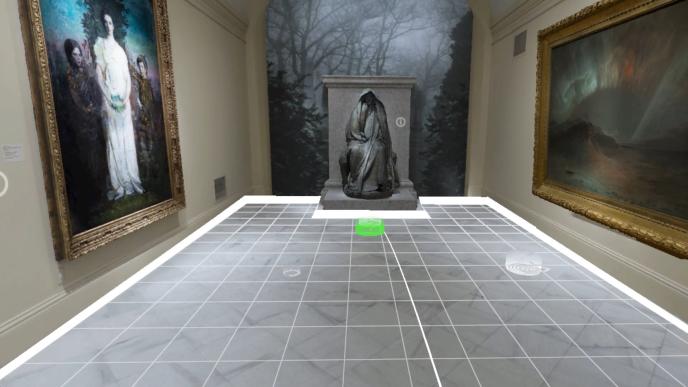

Adams Memorial
As you draw close to the statue a text overlay appears which details the story of this famous bronze sculpture by Augustus Saint-Gaudens. 'Clover' Adams, wife of writer Henry Adams, committed suicide in 1885 by drinking chemicals used to develop photographs. Her grieving husband commissioned sculptor Augustus Saint-Gaudens to create a memorial that would express the Buddhist idea of nirvana, a state of being beyond joy and sorrow. Using the VR hand controller the user can transport into a 3D volumetric scan of a foggy cemetery where the matching statue exists.
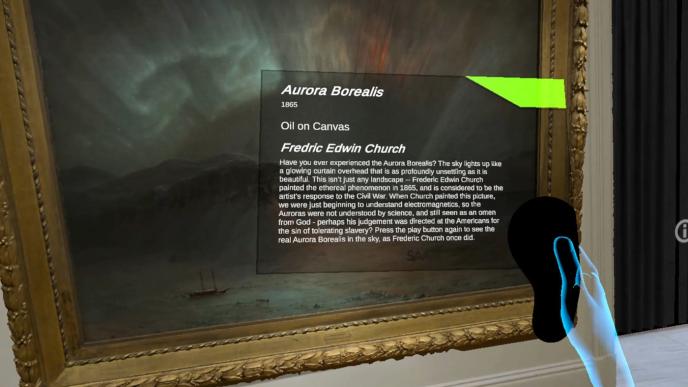
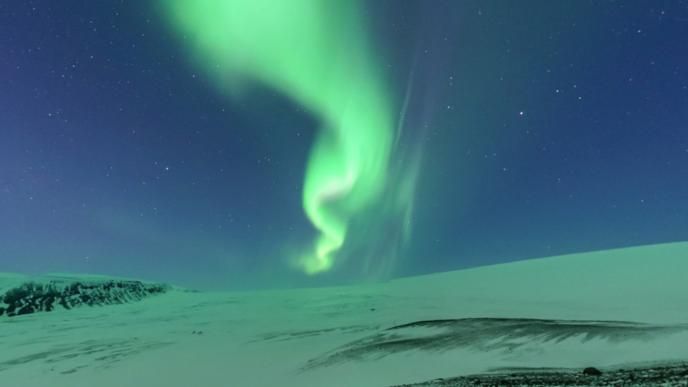
Aurora Borealis
The original oil painting was created in 1863 by artist Frederic Edwin Church. Under a dark Arctic sky, polar explorer Isaac Israel Hayes’ ship, the SS United States, lies frozen in the pack ice at the base of a looming cliff. The auroras above erupt in a cascade of eerie lights, while the dogsled implies the hope of rescue for this icy prison.
Again as you approach the painting in VR you have the option to teleport into the art piece. You then appear in Iceland, to view a full 360 video at 6K resolution of the aurora borealis, provided by designer and photographer Olafur Haraldsson. As the beautiful video plays you can ponder the historical context of the work.
During the Civil War, the auroras—usually visible only in the North—were widely interpreted as signs of God’s displeasure with the Confederacy for advocating slavery, and of the high moral stakes attached to a Union victory. Viewers understood that Church’s painting of the aurora borealis (also known as the northern lights) alluded to this divine omen relating to the unresolved conflict.
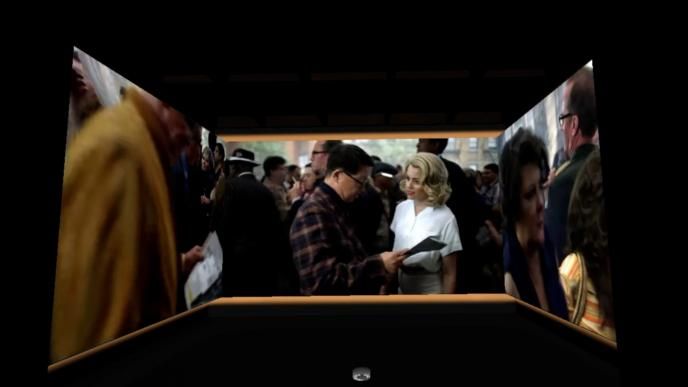
Face in the Crowd
In this art piece you approach a darkened doorway and enter into a virtual theatre, where the 2013 three-channel video installation plays on three walls. The artist, Alex Prager, directed hundreds of actors on constructed sets to create portraits of large crowds at airport terminals, lobbies, beaches, movie theaters and other public spaces. For each scene, Prager taps into a shared cultural memory to create images that are familiar yet strange. The footage was colored by Framestore's Lead Colourist Beau Leon.
